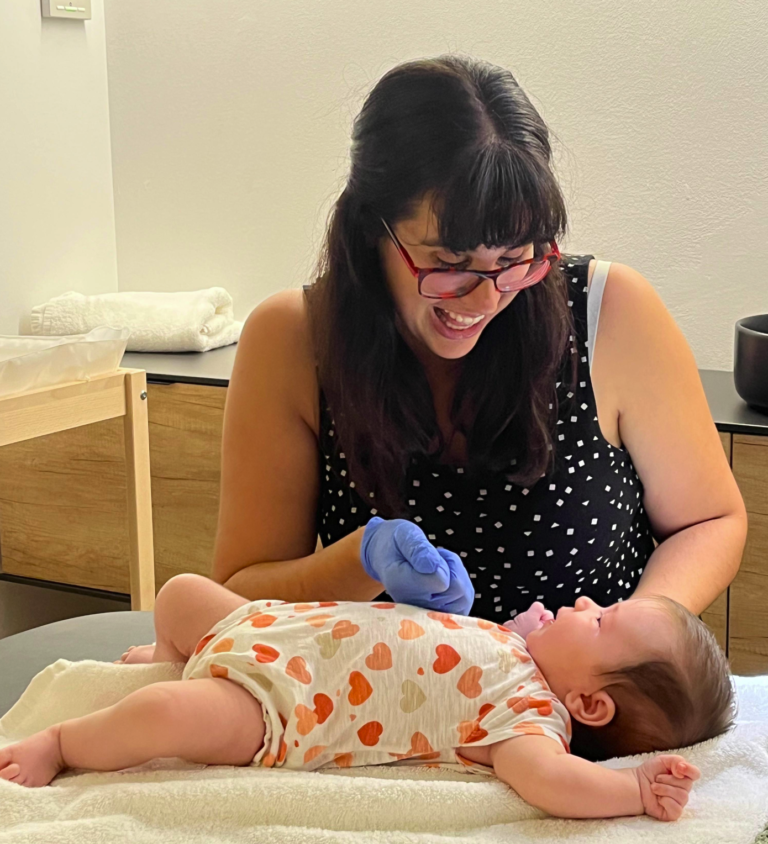
When babies refuse babywearing
Author: Marta Miarons, pediatric physiotherapist
Babywearing, such as with slings and baby carriers, is a fantastic tool for many families in the first months or years of a baby’s life.
Benefits of babywearing
Carrying allows babies to remain in contact with their adults and feel safe and protected. It helps them regulate their body temperature, heart rate, and respiration. In the first weeks of life, it facilitates longer skin-to-skin contact and helps the adult to detect and anticipate the baby’s needs, such as signs of hunger, sleep, or discomfort. In addition, continuous contact with the mother facilitates the establishment of breastfeeding.
Correct babywearing positions the baby in a comfortable position, which can help reduce digestive discomfort or colic and, in many cases, is also an effective strategy for helping babies sleep.
It also benefits the adult who carries the baby, facilitating bonding with the baby, maintaining posture, reducing stress, and promoting self-esteem and freedom of movement. It allows for going out for a walk, having hands free to do simple tasks with the baby at home, or taking care of older siblings.
Causes for babywearing refusal
However, occasionally, some babies cannot relax in a baby carrier. From birth, some babies may be uncomfortable, arching, pulling their head back, raising their head too much, losing the correct posture in the baby carrier, or even crying and refusing to stay in a baby carrier. In these cases, it is important to assess the reason for this rejection, as it is likely to show the baby’s physical discomfort beyond the discomfort of carrying.
First, the baby’s correct position in the carrier must be assessed. Babies must be placed in an ergonomic and safe position: in pelvic retroversion, flexion, and bending of the hips to 90º and a slight curve of the spine. It is important to ensure that the baby carrier allows the baby to remain in the most symmetrical posture possible and that it fits the body well. Importantly, a baby carrier should suit the baby’s age, the adult’s needs, and the baby’s.
If the baby is carried ergonomically and safely but is still uncomfortable, a possible physical discomfort of the baby, which may be due to dural tension, must be ruled out. In this case, the baby could suffer neuromeningeal tension of the dura mater, due to micro-ruptures in the tissue that become contracted and cause a decrease in its elasticity. This may be caused by the position in the womb or by interventions during labor. In this case, it can be observed that the baby tends to arch backward, forcing the baby to hold the head from birth and hindering the natural flexed posture of a newborn. This situation may also hinder the establishment of breastfeeding, as it complicates the correct position of the baby at the breast. Dural tension can also cause great irritability and can be associated with digestive problems and vertebral joint dysfunctions.
It should also be ruled out that the discomfort may be due to Gastroesophageal Reflux Disease (GERD), which causes more pain in the kyphotic posture of the spine. There may also be an activation of the startle reflex or an excess of the extensor pattern: a pattern activated in response to touch or sound stimuli and makes them uncomfortable in a baby-carrying posture.
Dural tension can be treated with manual therapy. This improves tissue elasticity, decreases irritability, and allows the infant to resume a flexed posture and be carried in a carrier or sling. If dural tension is suspected, the family should be referred to a specialist physiotherapist who can assess and treat the baby.
References
Training: Physiotherapy in lactation. Aúpale Institute, 2022.
Training: Babywearing and its applications in Maternal and Child Health. FisioByM School, 2023. Iñaki Pastor Pons. Pediatric manual therapy in neuromusculoskeletal disorders in infants and children. Barcelona: Elsevier; 2023

Marta Miarons is a Pediatric physiotherapist at the LactApp Barcelona Clinic